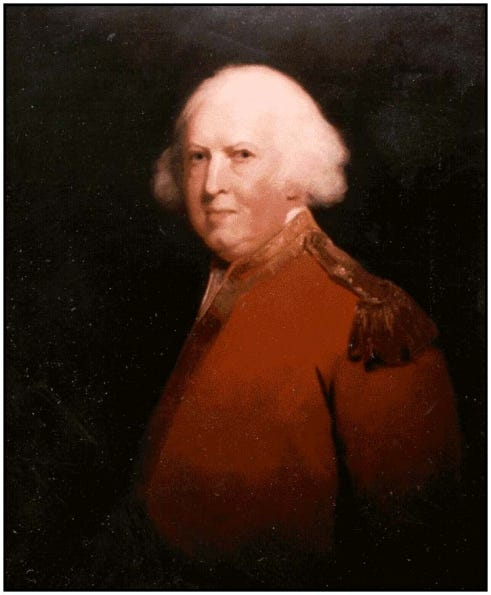An American President and Founding Father Jailed in the Tower Of London!
Henry Laurens, President of the Continental Congress, was captured by the British on the high seas and locked in the Tower for 15 months! Who knew?

Why didn’t we hear about this in school?
Good question!
Laurens may well be America’s most undeservedly overlooked founding father. He had been President of the Congress for two terms during which he was defacto president of the country. At the request of Congress, he set off on a critical mission to obtain war loans from the Dutch government. Just off the coast of Newfoundland his ship was overtaken by a well-armed British frigate. In the haste to conceal his identity, Laurens weighted and tossed all the satchels of his correspondence overboard. Several didn’t sink however and were fished out by British sailors.
On finding out who he was, Laurens was taken to London on suspicion of high treason. He was placed in solitary confinement on October 6, 1780. During the first day as a prisoner, a group of musicians on the grounds struck up the tune “Yankee Doodle” in derision of Laurens. He wrote about it:
“The tune filled my mind with a sublime contempt & rather made me cheerful.”
This Was No Small Deal!
As a President of Congress in 1780, Laurens had been America’s chief executive as there was then no executive branch of the government. It meant the jailing one of America’s topmost officials in a notorious English prison by ministers of the king, with the king’s full knowledge and consent. He was, as the phrase goes, “no small potatoes” or they probably would have hanged him immediately. In any case, his captured papers initiated England’s war with the Dutch in addition to his lengthy confinement.

Laurens had been the third president of the Congress, following the presidency of John Hancock and was in that office during the time the Articles of Confederation were ratified under his leadership.

They lodged him in a room measuring 12 feet square with a single window into which the Lieutenant Constable of the Tower had ostentatiously placed iron bars —- not to prevent an escape, which he knew would never be attempted, but rather to intimidate, harass and insult his prisoner. The room was sparsely furnished and Laurens was denied visitors as well as paper, pen and ink. A guard attended him at all times, day and night. Again, that was a superfluous measure done solely to annoy.
While in Congress during the war, Laurens had insisted that British prisoners in America were to be treated with fairness and decency with their needs provided for. He was not accorded similar treatment.

Before serving in Congress, Laurens had been a successful merchant with business ties and personal friends in London, some of whom had remained friends over the course of many years. One of these was Richard Oswald who visited him in the Tower on March 7, and suggested how he could obtain a pardon and his freedom:
“You can write two or three lines to the ministers & barely say you are sorry for what is past and a pardon will be granted. Otherwise your confinement might be long and there could be consequences.”
Laurens replied:
“Permit me to repeat, sir, I am afraid of no consequences but such as would flow from dishonorable acts.”
By which he meant he was not about to plead with his tormentors for his release.
Oswald wasn’t the only friend encouraging him to admit his guilt to the Crown. A week later, on March 14, Major General James Grant, who Laurens had known for twenty years offered to provide him with pencil and paper to write out a proposal for his release, to which the prisoner replied:
“My dear General, I have both paper and pencil in yonder little box but not one proposal.”
Laurens would not plead for leniency because he didn’t consider himself guilty of anything. Serving his country was not an act requiring forgiveness of any kind, in fact it was an honor he held in highest esteem.
“If I were a rascal, I might presently get out of the Tower. I am not.”
Sadly, Americans live in a time when even the most degrading and shameful dishonor on the part of political rascals is accepted if not actually praised. This includes some of the highest ranking leaders in our government. The very concept of honor itself is widely disdained if not ridiculed.
Find out more about this fascinating piece of forgotten American history and get a recipe for Charleston’s famous She Crab Soup. Become a paid subscriber for only $7 a month and you will help “Eat Your History” to continue publishing. Thank you, dear friends.
Keep reading with a 7-day free trial
Subscribe to Eat Your History to keep reading this post and get 7 days of free access to the full post archives.




